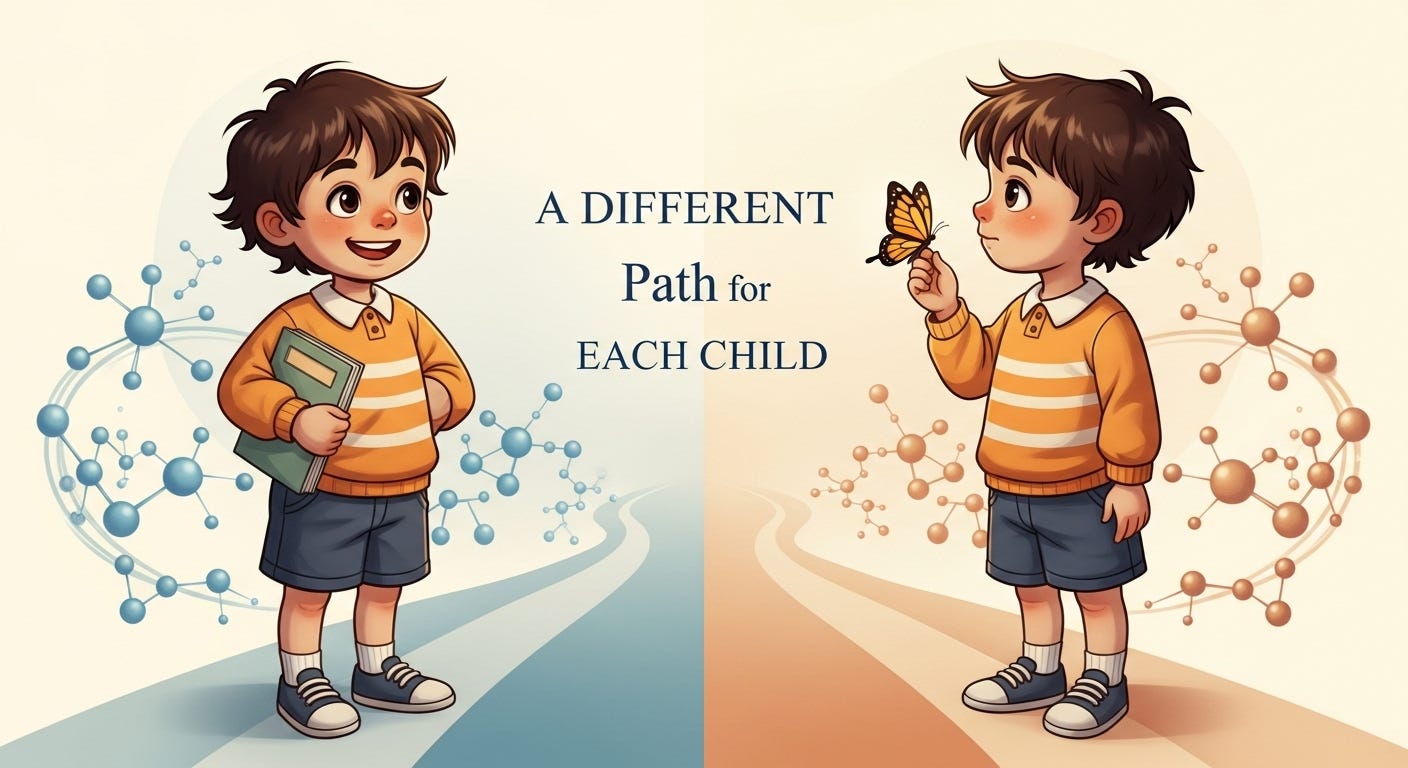The Non-Shared Environment (Part 2): Randomness Goes Deeper Than You Think
Last time, I wrote about how even identical twins become different—and how a large part of that difference is due to what scientists call the non-shared environment. In many cases, that means random events that affect each child differently.
But the randomness doesn’t stop at the social world.
It turns out that inside our bodies, randomness plays a huge role too. Many biological processes—including gene expression, brain wiring, and even how well we digest food—are influenced by stochastic (random) events at the cellular level.
Here’s what that means in practice:
Even genetically identical animals raised in identical environments—same cage, same food, same light, same everything—still turn out different.
They differ in physical traits (like size or fur color), in hormone levels, and even in personality.
Some swim faster. Some explore more. Some live longer. Some have more babies.
A few examples
When researchers placed groups of genetically identical crayfish in a stressful environment, the crayfish formed social hierarchies: one became dominant, some were subordinates. Over time, the dominant crayfish grew faster, even though they all had equal access to food.
One hypothesis? Random differences in how efficiently each crayfish’s cells digested food—something no one could see or predict—set off a chain reaction.
In tiny worms with only a few hundred cells, scientists found that some embryos with a harmful mutation still survive—simply due to random fluctuations in gene expression during development. The genetic code was the same. The environment was the same. But the outcome was different.
And yes—even identical twins have different fingerprints. Something you may have heard on crime shows… and it’s true.
Why am I telling you this?
Because it’s a powerful reminder that not everything about our kids is within our control.
We spend so much time worrying:
Did I do the right thing? Did I say the right words? Should I have made a different choice?
But biology itself is telling us: a lot of what makes our children who they are is shaped by chance.
By small, random events that snowball into something meaningful.
As parents, that’s hard to hear… but also freeing.
Note that this also mean there is no way to make exact clones of us or of our children. We are little snowflakes after all. We are the unique combination of a great deal of factors, some completely random, that affect development.
So, we don’t have to shape every detail of our child’s life.
We can’t.
As I keep saying, what we can do is show up with warmth, support, and consistency, and not judge ourselves too harshly.
References
Plomin, R., Nonshared environment: Real but random. JCPP Advances, 2024: p. e12229.
Laskowski, K.L., et al., The emergence and development of behavioral individuality in clonal fish. Nature communications, 2022. 13(1): p. 6419.
Freund, J., et al., Emergence of individuality in genetically identical mice. Science, 2013. 340(6133): p. 756-759.
Raj, A., et al., Variability in gene expression underlies incomplete penetrance. Nature, 2010. 463(7283): p. 913-918.
Burga, A. and B. Lehner, Beyond genotype to phenotype: why the phenotype of an individual cannot always be predicted from their genome sequence and the environment that they experience. The FEBS journal, 2012. 279(20): p. 3765-3775.



